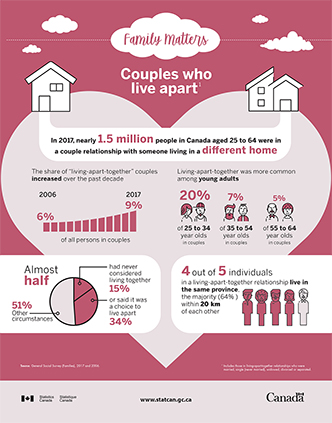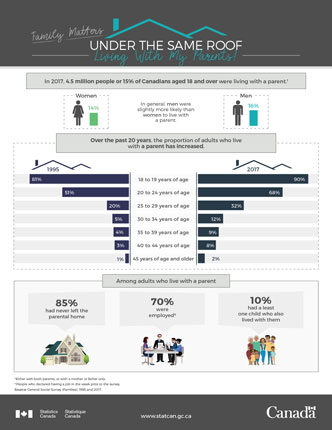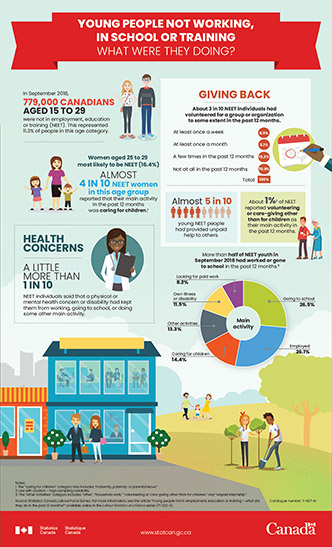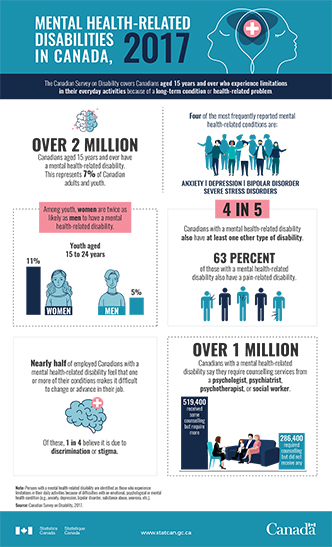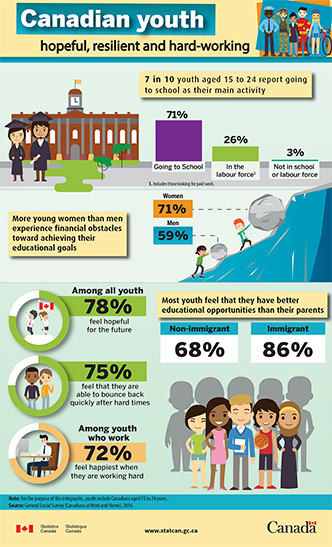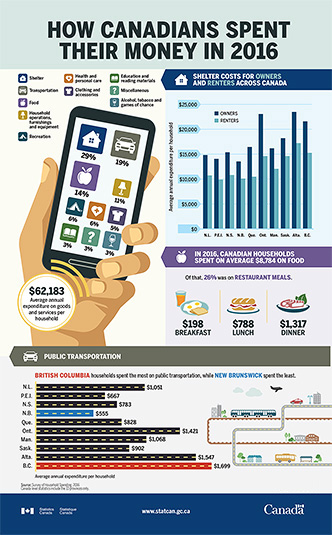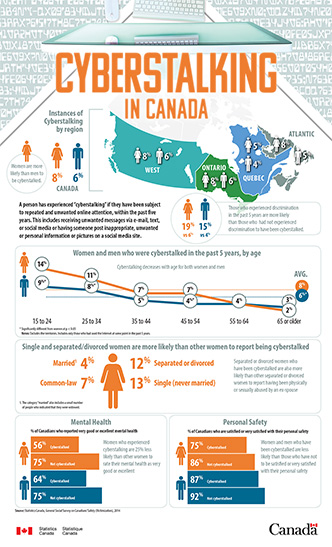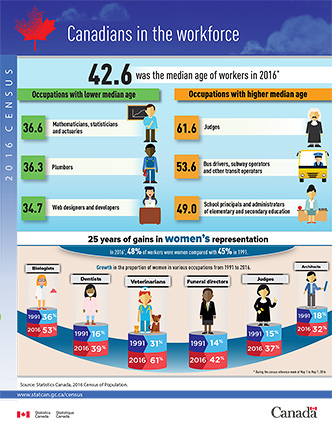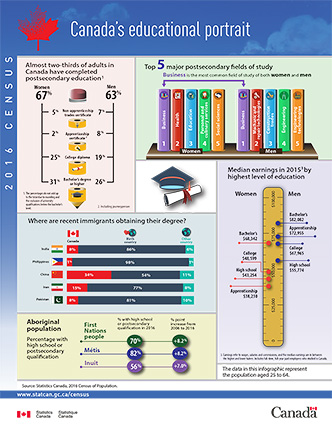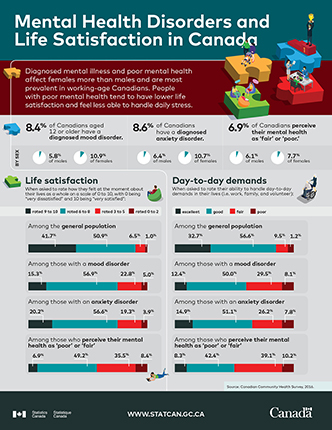Corrections Key Indicator Report for Adults - 2016/2017
Jurisdiction: Please Select Your Jurisdiction
Please return completed questionnaire by <date>.
Introduction
This information is collected under the authority of the Statistics Act, Revised Statues of Canada, 1985, Chapter S-19.
Completion of this questionnaire is a legal requirement under this act.
Purpose of Survey
The Corrections Key Indicator Report for Adults monitors trends in correctional populations and provides a basis for calculating incarceration rates based on the Canadian population. This survey describes average counts of adults under custody and under community supervision, who are under the responsibility of provincial/territorial correctional services.
The information may also be used by Statistics Canada for other statistical and research purposes.
Confidentiality
Statistics Canada is prohibited by law from releasing any information it collects which could identify any person, business, or organization, unless consent has been given by the respondent or as permitted by the Statistics Act. Statistics Canada will use the information from this survey for statistical purposes.
For more information
For more information, visit the "Information for survey participants" page.
Contact Information
Please provide the name and title of the person who completed this questionnaire. We require this information for follow-up purposes. It is recommended that you keep a copy of this questionnaire for your records in case we require clarification about the information provided.
- Name of person completing form
- Title
- Phone
- E-mail
- Fax
- Date
STC/CCJ-135
Tables 1 to 6 collect average-daily custody counts
The Average Daily custody counts (Tables 1 to 6) should be derived from daily-midnight counts and refer to the number of adult inmates physically inside the facility at the time the count is taken. However, if daily-midnight counts are not available, use the most frequent time interval, point in time or estimate, and indicate it in the comment fields.
Table 1: Average daily counts of adults in REMAND custody ONLY, April 2016 to March 2017 (for each of the following categories: Male, Female, Gender Not Stated, Total)
INSTRUCTIONS:
For table 1, include only persons in custody on a REMAND Warrant of Committal who are awaiting a court appearance AND ARE NOT also presently serving a sentence or being held on another "hold" status.
If average counts of adults held on REMAND ONLY are not available (i.e. pure remand status), or if your jurisdiction is unable to distinguish between remand-only counts and dual-status offenders on remand, refer to Table 4 to report average daily counts of all adults held in remand.
- April
- May
- June
- July
- August
- September
- October
- November
- December
- January
- February
- March
- Total Average
Please specify if period used is other than April 2016 to March 2017:
Comments:
Table 2: Average daily counts of adults in SENTENCED CUSTODY ONLY, April 2016 to March 2017 (for each of the following categories: Male, Female, Gender Not Stated, Total)
INSTRUCTIONS:
- For Table 2, include only inmates held serving PROVINCIAL/TERRITORIAL or FEDERAL sentences, and NOT presently held on another "hold" status.
- If you are unable to provide separate counts for Federal offenders, please provide the full count of all offenders in Provincial/Territorial Sentenced custody (Table 2A) and check Box A.
- If average counts of adults held in sentenced custody ONLY are not available (i.e. pure sentenced custody status), or if your jurisdiction is unable to distinguish between sentenced-only counts and dual-status offenders in sentenced custody, refer to Table 5 to report average daily counts of all adults held in sentenced custody.
2A PROVINCIAL/TERRITORIAL
- April
- May
- June
- July
- August
- September
- October
- November
- December
- January
- February
- March
- Total Average
Please specify if period used is other than April 2016 to March 2017:
2B FEDERAL
- April
- May
- June
- July
- August
- September
- October
- November
- December
- January
- February
- March
- Total Average
Please specify if period used is other than April 2016 to March 2017:
Box A
Provincial/Territorial custody counts includes both Provincial/Territorial and Federal custody counts.
Comments:
Table 3: Average daily counts of adults in OTHER/TEMPORARY DETENTION ONLY, April 2016 to March 2017 (for each of the following categories: Male, Female, Gender Not Stated, Total)
INSTRUCTIONS:
For Table 3, include only adults held in provincial/territorial correctional institutions for lock-ups, parole violations or suspensions, immigration holds, and those who are temporarily detained without warrants of any type.
If average counts of adults held in other/temporary detention ONLY are not available (i.e. pure other/temporary detention custody status), or if your jurisdiction is unable to distinguish between other/temporary detention-only counts and dual-status offenders in other/temporary detention custody, refer to Table 6 to report average daily counts of all adults held in other/temporary detention.
- April
- May
- June
- July
- August
- September
- October
- November
- December
- January
- February
- March
- Total Average
Please specify if period used is other than April 2016 to March 2017:
Comments:
Tables 4 to 6 collect data related to DUAL STATUS CUSTODY sentences
Table 4: Average daily counts of adults held on a DUAL STATUS which includes REMAND and SENTENCED CUSTODY, April 2016 to March 2017 (for each of the following categories: Male, Female, Gender Not Stated, Total)
INSTRUCTIONS:
For Table 4, include all inmates held on a sentenced Warrant of Committal and a Remand Warrant of Committal.
If you are unable to provide separate counts for offenders on a dual status which includes Federal sentenced custody, provide the full count of all offenders on a dual status in the Provincial/Territorial table.
If average counts of adults held on remand ONLY are not available (Table 1), or if your jurisdiction is unable to distinguish between remand-only counts and dual-status offenders on remand, report average daily counts of all adults held in remand in this table (Table 4) and note what is included below in Box A, B or C.
4A PROVINCIAL/TERRITORIAL
- April
- May
- June
- July
- August
- September
- October
- November
- December
- January
- February
- March
- Total Average
Please specify if period used is other than April 2016 to March 2017:
4B - FEDERAL
- April
- May
- June
- July
- August
- September
- October
- November
- December
- January
- February
- March
- Total Average
Please specify if period used is other than April 2016 to March 2017:
Box A
Provincial/Territorial Dual Status includes both Provincial/Territorial and Federal Dual Status custody.
Box B
Includes remand-only counts and dual-status offenders held in remand and sentenced custody
Box C
Includes dual-status offenders held in remand and sentenced custody ONLY (Remand-only counts reported in Table 1)
Comments:
Table 5: Average daily counts of adults held on a DUAL STATUS which includes SENTENCED CUSTODY and OTHER/TEMPORARY DETENTION, April 2016 to March 2017 (for each of the following categories: Male, Female, Gender Not Stated, Total)
INSTRUCTIONS:
For Table 5, include all inmates held on a SENTENCED Warrant of Committal and held in Other/Temporary Detention.
If you are unable to provide separate counts for offenders on a dual status which includes Federal sentenced custody, provide the full count of all offenders on a dual status in the Provincial/Territorial table.
If average counts of adults held on sentenced custody ONLY are not available (Table 2), or if your jurisdiction is unable to distinguish between sentenced-only counts and dual-status offenders in sentenced custody, report average daily counts of all adults held in sentenced custody in this table (Table 5) and note what is included below in Box A, B or C.
5A PROVINCIAL/TERRITORIAL
- April
- May
- June
- July
- August
- September
- October
- November
- December
- January
- February
- March
- Total Average
Please specify if period used is other than April 2016 to March 2017:
5B FEDERAL
- April
- May
- June
- July
- August
- September
- October
- November
- December
- January
- February
- March
- Total Average
Please specify if period used is other than April 2016 to March 2017:
Box A
Provincial/Territorial Dual Status includes both Provincial/Territorial and Federal Dual Status custody.
Box B
Includes sentenced-only counts and dual-status offenders held in other/ temporary and sentenced custody
Box C
Includes dual-status offenders held in other/ temporary detention and sentenced custody ONLY (Sentenced-only counts reported in Table 2)
Comments:
Table 6: Average daily counts of adults held on a NON-SENTENCED DUAL STATUS (e.g. remand and other/temporary detention), April 2016 to March 2017 (for each of the following categories: Male, Female, Gender Not Stated, Total)
INSTRUCTIONS:
For Table 6, include all inmates held on a REMAND Warrant of Committal and on an Other/ Temporary Detention.
If average counts of adults held in other/temporary detention custody ONLY are not available (Table 3), or if your jurisdiction is unable to distinguish between other/temporary detention-only counts and dual-status offenders in other/temporary detention, report average daily counts of all adults held in other/temporary detention in this table (Table 6) and note what is included below in Box A or B.
- April
- May
- June
- July
- August
- September
- October
- November
- December
- January
- February
- March
- Total Average
Please specify if period used is other than April 2016 to March 2017:
Box A
Includes other/temporary detention-only counts and dual-status offenders held on other/ temporary or remand status
Box B
Includes dual-status offenders held in other/ temporary detention and remand custody ONLY (Other/temporary detention-only counts reported in Table 3)
Comments:
Tables 7 to 12 collect month-end community counts
The Average Month-end community counts (Tables 7 to 12) should be derived from month-end counts of offenders under supervision. However, if month-end counts are not available, use the most frequent time interval, point in time or estimate, and indicate it in the comment fields.
Table 7: Average month-end counts of adults serving SUPERVISED PROBATION only, April 2016 to March 2017 (for each of the following categories: Male, Female, Gender Not Stated, Total)
INSTRUCTIONS:
Includes adults who must, as a condition of a probation order, report to and be under the supervision of a probation officer or other person designated by the court ONLY, and are NOT also presently serving conditional sentence or parole. To report the month-end count of offenders on dual-status for probation and conditional sentence or parole, refer to Tables 10 and 12.
If month-end counts of adults serving supervised probation ONLY are not available (i.e. pure probation), or if your jurisdiction is unable to distinguish between probation-only counts and dual-status offenders on probation and conditional sentence or parole, report the month-end counts of all adults on probation in Table 10 and note what is included.
- April
- May
- June
- July
- August
- September
- October
- November
- December
- January
- February
- March
- Total Average
Please specify if period used is other than April 2016 to March 2017:
Comments:
Table 8: Average month-end counts of adults serving a CONDITIONAL SENTENCE only, April 2016 to March 2017 (for each of the following categories: Male, Female, Gender Not Stated, Total)
INSTRUCTIONS:
For this table, include all offenders serving a conditional sentence ONLY, and are NOT presently serving supervised probation or parole. To report the month-end count of offenders on dual-status for probation and conditional sentence or parole, refer to Tables 10 and 11.
If month-end counts of adults serving a conditional sentence ONLY are not available (i.e. pure conditional sentence) or if your jurisdiction is unable to distinguish between conditional sentence-only counts and dual-status offenders on conditional sentence and probation or parole, report the month-end counts of all adults on conditional sentence in Table 11 and note what is included.
- April
- May
- June
- July
- August
- September
- October
- November
- December
- January
- February
- March
- Total Average
Please specify if period used is other than April 2016 to March 2017:
Comments:
Table 9: Average month-end counts of adult offenders on PROVINCIAL PAROLE, April 2016 to March 2017 (for each of the following categories: Male, Female, Gender Not Stated, Total)
INSTRUCTIONS:
For this table, include all adults in Quebec, Ontario and British Columbia on Provincial Parole ONLY, and are NOT presently serving supervised probation or parole. To report the month-end count of offenders on dual-status for parole and probation or conditional sentence, refer to Tables 11 and 12.
If month-end counts of adults on parole ONLY are not available (i.e. pure parole) or if your jurisdiction is unable to distinguish between parole-only counts and dual-status offenders on parole and probation or conditional sentence report the month-end counts of all adults on parole in Table 12 and note what is included.
- April
- May
- June
- July
- August
- September
- October
- November
- December
- January
- February
- March
- Total Average
Please specify if period used is other than April 2016 to March 2017:
Comments:
Table 10: Average month-end counts of adults on a community DUAL STATUS of PROBATION and CONDITIONAL SENTENCE, April 2016 to March 2017 (for each of the following categories: Male, Female, Gender Not Stated, Total)
INSTRUCTIONS:
If average counts of adults on supervised probation ONLY are not available (Table 7), or if your jurisdiction is unable to distinguish between probation-only counts and dual-status offenders on probation, report average month-end counts of all adults on probation in this table (Table 10) and note what is included below in Box A or B.
- April
- May
- June
- July
- August
- September
- October
- November
- December
- January
- February
- March
- Total Average
Please specify if period used is other than April 2016 to March 2017:
Box A
Includes supervised probation-only counts and dual-status offenders on supervised probation and conditional sentence
Box B
Includes dual-status offenders on supervised probation and conditional sentence custody ONLY (Supervised probation-only counts reported in Table 7)
Comments:
Table 11: Average month-end counts of adults on a community DUAL STATUS of CONDITIONAL SENTENCE and PAROLE, April 2016 to March 2017 (for each of the following categories: Male, Female, Gender Not Stated, Total)
INSTRUCTIONS:
If average counts of adults on conditional sentence ONLY are not available (Table 8), or if your jurisdiction is unable to distinguish between conditional sentence-only counts and dual-status offenders on conditional sentence, report average month-end counts of all adults on conditional sentence in this table (Table 11) and note what is included below in Box A or B.
- April
- May
- June
- July
- August
- September
- October
- November
- December
- January
- February
- March
- Total Average
Please specify if period used is other than April 2016 to March 2017:
Box A
Includes conditional sentence-only counts and dual-status offenders on conditional sentence and parole
Box B
Includes dual-status offenders on conditional sentence and parole custody ONLY (Conditional Sentence-only counts reported in Table 8)
Comments:
Table 12: Average month-end counts of adults on a community DUAL STATUS of PROBATION and PAROLE, April 2016 to March 2017 (for each of the following categories: Male, Female, Gender Not Stated, Total)
INSTRUCTIONS:
If average counts of adults on parole ONLY are not available (Table 9), or if your jurisdiction is unable to distinguish between parole-only counts and dual-status offenders on parole, report average month-end counts of all adults on parole in this table (Table 12) and note what is included below in Box A or B.
- April
- May
- June
- July
- August
- September
- October
- November
- December
- January
- February
- March
- Total Average
Please specify if period used is other than April 2016 to March 2017:
Box A
Includes parole-only counts and dual-status offenders on supervised probation and parole
Box B
Includes dual-status offenders on supervised probation and parole custody ONLY (Parole-only counts reported in Table 9)
Comments:
Table 13: Average daily count of offenders ON REGISTER BUT NOT IN CUSTODY, fiscal year April 2016 to March 2017 (for each of the following categories: Male, Female, Gender Not Stated, Total)
INSTRUCTIONS:
The average On-register but not in custody count should be derived from daily-midnight counts of offenders actually on the institutional registers but temporarily absent from the institution at the time of count. If daily counts are not available, use the most frequent time interval available and indicate the number of time points used below in Box A. If these data are not readily available, please provide an estimate of this population.
- Temporary Absence
- Unlawfully at Large
- Day Parole
- Other
- Total Average
Please specify if period used is other than April 2016 to March 2017:
Comments:
Table 14: Average month-end count of OFFENDERS SUPERVISED on other types of community supervision in your jurisdiction, fiscal year April 2016 to March 2017 (for each of the following categories: Male, Female, Gender Not Stated, Total)
INSTRUCTIONS:
The average month-end count should be derived from month-end counts of offenders under supervision, however, if month-end counts are not available, use the most frequent time interval, point in time or estimate, and indicate the other time point used below in Box
- Temporary Release from Custody
- Fine Option Program
- Community Service
- Bail Supervision
- Restitution
- Other (i.e. Alternative Measures, Peace Bonds)
- Total Average
Please specify if period used is other than April 2016 to March 2017:
DEFINITIONS:
- Fine Option Program provides work service as an alternative payment of a fine.
- Community Service requires offenders to perform community services for an individual or non-profit organization, which may or may not be a condition of supervised probation. Monthly counts should include all offenders with a requirement to complete community service work.
Comments:
A-KIR Definitions
Actual-in counts: All persons held in custody under sentence, on remand, or who are otherwise legally required to be at a custody facility and who are present at the time the count is taken.
Average Daily Counts: The average number of persons supervised under a specified program on a daily basis.
Monthly average daily count calculation: The data for monthly average daily counts are calculated by dividing the total days stay (or total "bed" days) for all correctional institutions within the jurisdiction by the number of days in the month.
Month-end counts: This data should be derived from month-end counts of offenders under supervision.
Custody
Remand only: Remand includes those persons in custody on a REMAND Warrant of Committal ONLY who are awaiting a further court appearance (i.e. pure remand average counts), and are NOT presently serving a sentence or being held on another "hold" status.
Sentenced custody only: Offenders who are sentenced to an aggregate term of imprisonment under a Warrant of Committal ONLY, and NOT presently held on another "hold" status.
Other-temporary detention: adults who are being held in provincial/territorial correctional institutions for lock-ups, parole violations or suspensions, immigration holds, and those who are temporarily detained without warrants of any type.
Lock-up: a short period of custody spent in jail (since no cell is available in police station), while waiting to be released, usually to see a Justice of the Peace.
Dual status Remand and Sentenced custody: includes all inmates held on a Provincial/Territorial sentenced Warrant of Committal and a Remand Warrant of Committal.
Dual status Sentenced custody and Other-temporary detention: includes all inmates held on a Provincial/Territorial sentenced Warrant of Committal and those held in other/temporary detention.
Non-sentenced dual status Remand and Other-temporary detention: includes all inmates held on a REMAND Warrant of Committal and on an Other / Temporary Detention.
Provincial/Territorial: Offenders who are sentenced to an aggregate term of imprisonment which is less than two years are the responsibility of provincial or territorial correctional services.
Federal: Offenders under federal responsibility, held in a provincial/territorial facility through an Exchange of Service Agreement (ESA).
Community
Supervised probation : includes all adults who must, as a condition of a probation order, report to and be under the supervision of a probation officer or other person designated by the court ONLY, and are NOT presently serving a conditional sentence or parole.
Conditional sentence: includes all offenders serving a conditional sentence ONLY, and are NOT presently serving supervised probation or parole. Allows offenders sentenced to a term of custody to serve their time in the community under supervision. Compulsory conditions can be attached to the sentence such as remaining within the jurisdiction of the court and reporting to a supervisor as specified. Other conditions may require the offender to abstain from the consumption of alcohol or to perform community work.
Provincial parole: includes all adults in Quebec and Ontario on Provincial Parole ONLY, and are NOT presently serving supervised probation or conditional sentence. Allows the offender to serve the remainder of the sentence in the community under supervision by a community parole officer. Possible after serving 1/3 of the sentence.
Dual status supervised probation and conditional sentence: Includes dual-status offenders on supervised probation and conditional sentence ONLY.
Dual status conditional sentence and parole: Includes dual-status offenders on conditional sentence and parole ONLY.
Dual status of supervised probation and parole: Includes dual-status offenders on supervised probation and parole ONLY.
On-register but not in custody:
On-register: The average On-register but not in custody count should be derived from daily-midnight counts of offenders actually on the institutional registers but temporarily absent from the institution at the time of the count.
Temporary absence: Allows offenders to leave the institution for specific purposes. Offenders may be either "escorted" or "unescorted". Reasons for such releases are usually for family visits, medical services, rehabilitation programs, socialization or humanitarian reasons.
Day parole: After 1/6 of the sentence, the inmate can be allowed out to participate in ongoing community based activities. Inmates must return nightly to a halfway-house or a provincial –territorial jail unless otherwise authorized.
Other types of community supervision
Temporary release from custody: A release for a longer period of time, like 3 weeks to a month for humanitarian reasons.
Fine option program: provides work service as an alternative to the payment of a fine.
Community service: requires offenders to perform community services for an individual or non-profit organizations, which may or may not be a condition of supervised probation. Monthly counts should include all offenders with a requirement to complete community service work.
Other: may include bail supervision, restitution orders etc.
- Bail supervision: a community based program that is an alternative to detention before sentencing.
- Restitution: an additional order imposed upon an offender that requires the offender to make restitution for loss or damage."
